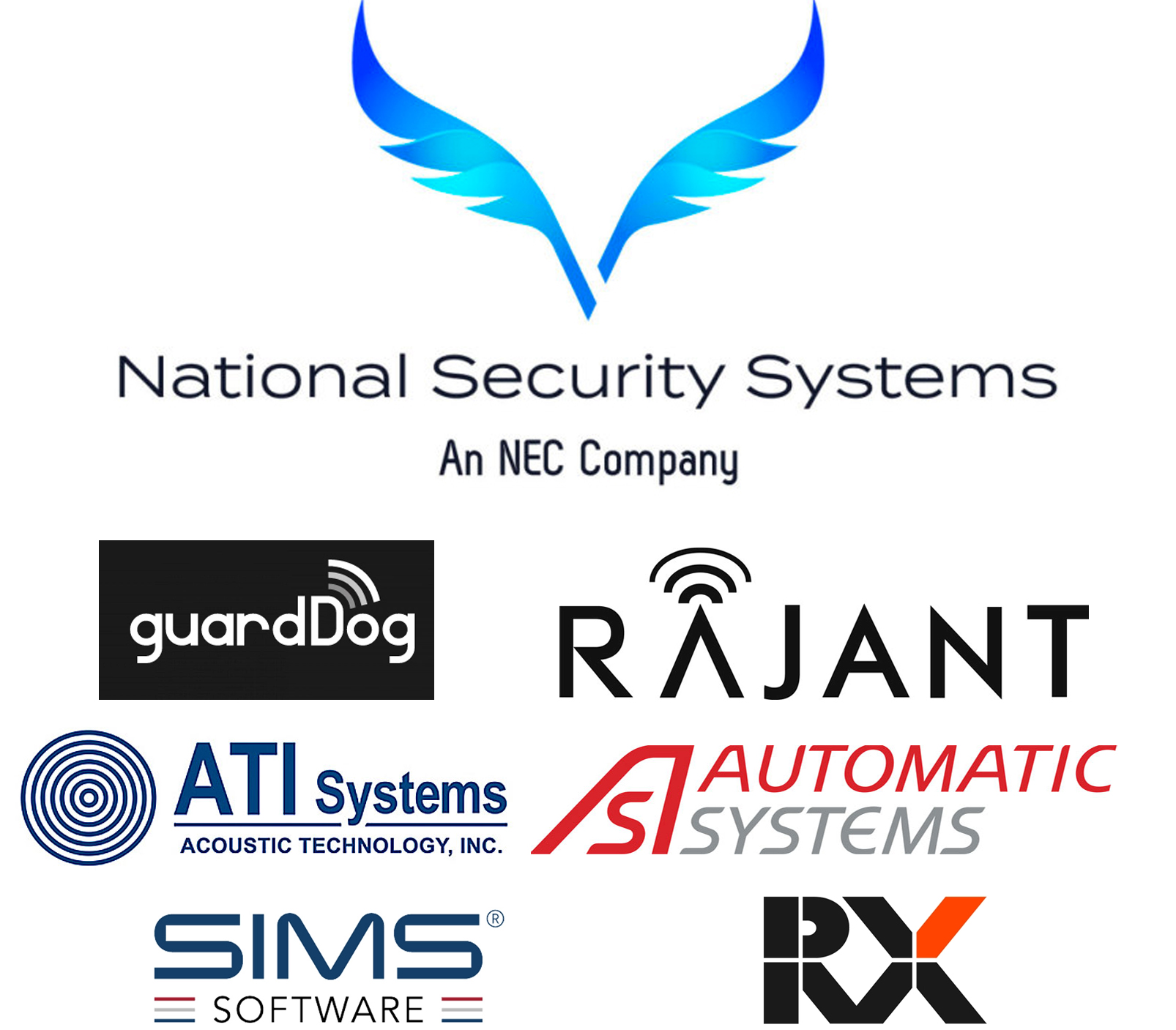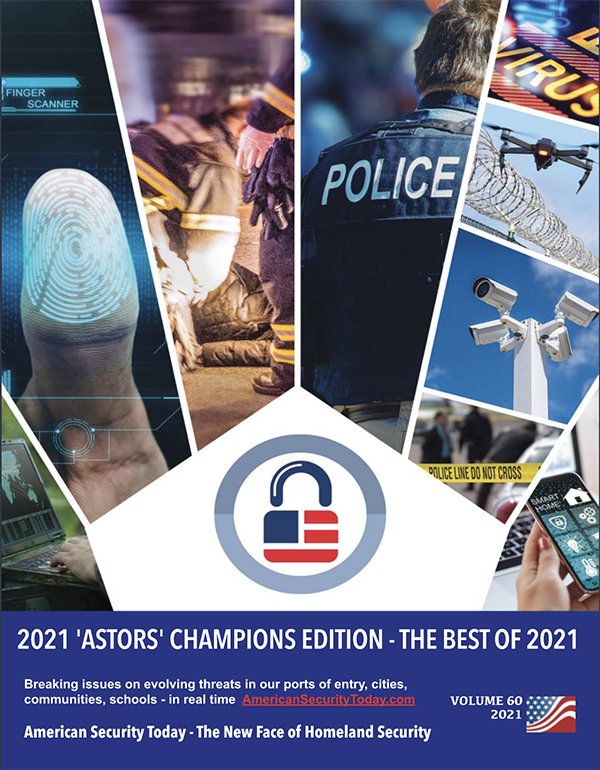
Guest Editorial by Sundeep Reddy Mallu, Head of ESG and Analytics at Gramener
The challenges that governments face after a natural disaster are often not only the incident itself but the vulnerability of at-risk populations. Stopping natural disasters may not be in authorities’ control entirely, but minimizing post-disaster recovery costs is an achievable goal.
In the U.S. alone, in 2021, there were 20 natural disaster events with losses exceeding $1 billion each. So, scientists, UN advisors, practitioners, and policymakers worldwide are showing more and more interest in advanced technologies supporting disaster prediction and early warning.

The use of predictive models for weather forecasts is a familiar concept, and there are recent breakthroughs that prove how AI is fast-tracking global weather predictions.
However, the Internet of Things (IoT), artificial intelligence (AI), and machine learning can be an ally in disaster risk analysis and natural hazards prediction, although not fully embraced yet.
AI-based solutions enable governments to accelerate the execution of planned projects and reduce the potential recovery cost from post-natural hazards.
But expect that AI solutions will have an adoption and learning curve for government departments as the outputs from these solutions will have to go through compliance and regulatory approvals.
(Learn More, courtesy of What’s AI, Louis Bouchard and YouTube.)
Let’s dive in.
Combining Social Media and AI for Faster Disaster Response
Nowadays, social media platforms are a key source of news. Social media users often provide first-hand actionable intelligence during a tragedy, protest, or election.
For example, early during the coronavirus pandemic, researchers with machine-learning programs analyzed social media, web, and news outlets to monitor the spread of COVID-19.
They searched for posts that mentioned Covid-specific symptoms to see where new hotspots arose and discovered early on that younger people were less affected by the disease.
These posts could eventually assist on-the-ground aid workers and rescue teams arriving at crisis points by helping locate victims and direct efforts to the most vulnerable.
AI and machine learning already have the power to boost the benefits of these online channels even further.
They can help sieve through 350,000 tweets per minute and authenticate photos and comments across all platforms, including YouTube, to distinguish between true and false information.
Another example is, when a government minister’s handle gets tweeted or tagged, it creates a large volume of information.
Isolating this noise and categorizing the tweets is essential to address the issues or requests and allocate resources where possible.
Combining satellite imagery data, seismometers, and AI and predictive analytics tools to scan location-tagged social media comments could offer ground-level location information and verify incidents in real-time, too.
The Vrije University Institute for Environmental Studies published a report analyzing how Twitter activity can help detect floods.
(See why BYU IT and Cybersecurity assistant professor Amanda Hughes was awarded a competitive $24,000 National Science Foundation (NSF) RAPID grant. The goal of the project is to better understand the process of real-time decision-making by human volunteers while they rapidly convert social media data into structured codes that machines can understand. That data is used to help emergency responders in disaster relief. Courtesy of BYU Engineering and YouTube.)
Geospatial AI for Disaster Management
Natural disasters are known to affect marginalized communities disproportionately.
This is because most risk information is delivered at a macro-level, covering hundreds of square meters, instead of localizing risk information down to the neighborhood scale.
One non-profit, SEEDS India, helps citizens with disaster recovery models and delivers granular risk scores down to house level through geospatial mapping.
SEEDS India, Gramener, and Microsoft partnered to build a machine-learning model to identify the most at-risk populations. Through analyzing high-resolution satellite imagery, 50,000 houses were manually tagged in a particular region to create training data.
(ClimateChange is a reality that is changing the lives of vulnerable communities. See how SeedsIndia is helping save lives using AI built by Gramener with Microsoft’s AI for Humanitarian Action grant. Courtesy of Microsoft India and YouTube.)
With photos, the algorithm could detect the socio-economic condition and vulnerability of the owner, and roofs were classified under seven categories based on the material used for construction.
The solution utilized high-resolution geospatial imagery, open datasets, and geospatial analytics tools to host and represent the results. It was deployed at scale in Puri during Cyclone Yaas in May 2021 and could predict houses most at risk with 92% accuracy.
Deploying similar solutions would mean that governments and authorities could warn high-risk houses earlier and prioritize who to evacuate with urgency. Residents could take preemptive measures such as evacuating to a safe site.
At the same time, aid workers would know where to deliver supplies or direct relief operations to benefit tens of thousands of people.
Such actions would reduce disaster impact and lower the overall time and cost of post-disaster recovery.
Modeling and Forecasting for Societal Resilience

“Artificial Intelligence (AI) could potentially add US$450 to 500 billion to India’s GDP by 2025,” said Senior Director and Head of Insights at NASSCOM, Achyuta Ghosh.
Economic growth in India’s tech industry could also be leveraged to combat the country’s suffering relating to natural disasters, as one of the most catastrophe-prone countries.
Governments know that AI is critical for increasing productivity across many different industries, but it is also essential for building a robust and resilient society.
In post-pandemic recovery, businesses realize the need to focus on preventing future disasters. Governments and humanitarian agencies are constantly asking themselves:
Response teams are looking for specifics, down to names and addresses so that aid can be mobilized effectively.
Machine learning and AI can help achieve accuracy in forecasting and predicting volcanic activity by delivering volcanic-seismic data and accelerating data acquisition and analysis.
Every volcano behaves differently, but machine learning combined with satellite measurements can consider the heterogeneity.

Juliet Biggs, a volcanologist at the University of Bristol, and her team use machine learning to spot ground movements around volcanoes due to magma shifts. By training an algorithm to sort through the data, volcanologists can more accurately monitor and predict volcanic eruptions, leading to communities being less hard hit by these natural disasters and building resilience.
Predictive models are scalable flood and cyclone prediction solutions, too.
During the 2019 Chikuma River flood in Japan, Feyera Hirpa, a Senior Data Scientist, found that the inundation model matched the actual flood, validating AI’s power for flood prediction.
During cyclone Yaas, SEEDS India reached out to around 1100 families living in Penthakata, Puri, and disseminated cyclone advisories, ensuring timely evacuation of people from vulnerable areas to safer places.
The use of AI has shown tremendous promise. However, there are still challenges. Accessibility and transparency need to be enhanced for the constructive use of AI and governing guidelines and regulations must be defined.
This is how governments will be able to make data from AI-based models translatable and usable for local communities on the other side of the digital divide.
About the Author

Sundeep Reddy Mallu is the Head of ESG and Analytics at Gramener, a data science firm, and Microsoft’s Gold ISV partner. He helps transform the organization through an advisory in building teams and adopting a data culture.
As TA head, he drives the hunt for great data science team players across industries and campuses and attracts them to join Team Gramener.
Related Technologies…
OnSolve a Triple ‘ASTORS’ Awards Winner in 2021 ‘ASTORS’ Awards Program

American Security Today’s Annual ‘ASTORS’ Awards is the preeminent U.S. Homeland Security Awards Program, and now in its Seventh Year, continues to recognize industry leaders of Physical and Border Security, Cybersecurity, Emergency Preparedness – Management and Response, Law Enforcement, First Responders, as well as federal, state and municipal government agencies in the acknowledgment of their outstanding efforts to Keep our Nation Secure.
OnSolve (First of Three)
-
Best Machine Learning & Artificial Intelligence (Tie**)
-
OnSolve Risk Intelligence
-
OnSolve offers a suite of AI-powered risk intelligence, critical communications, and incident management capabilities, so organizations can control the entire critical event management process, keep ahead of change, monitor disasters, and be empowered to make quicker, more accurate decisions during the times that matter most.

-
Organizations are able to gain risk intelligence information that allows them to prepare in advance for disasters and ensure business resiliency, send out mass alerts to notify the right people at the right time during a crisis, leverage a mobile incident management platform to retain full control during emergencies, and more.
-
Before, during, and after a critical event strikes, organizations now have the power of AI to inform timely and accurate situational awareness, the relevance and speed of leading mass notification services to manage critical communications, and the ability to holistically and seamlessly manage critical events through incident management – all from OnSolve.
-
OnSolve risk intelligence technology continues to keep people safe and informed, allowing them to better protect themselves, their employees, and communities.
(Learn how AI-powered OnSolve Risk Intelligence delivers intelligence that is truly actionable so you can make accurate and informed decisions. Courtesy of OnSolve and YouTube.)
OnSolve (Second of Three)
-
Best Security Orchestration, Automation & Response
-
OnSolve Control Center
-
Gain 360-control of critical events. With Risk Intelligence, Critical Communications, and Incident Management capabilities unified in a comprehensive interface, you’ll have real-time critical event management.

-
Spot emerging threats early. With OnSolve’s AI-powered engine users can filter through all the noise and delivers accurate, actionable intelligence, so they can launch crisis workflows earlier.
-
Ensure the right information gets to the right people at the right time. With a common operating picture, clients can assess the impact and activate relevant teams for immediate resolution.
-
Third-party integration enables clients to manage risk without disrupting existing operations and infrastructure.
OnSolve (Third of Three)
-
Best Threat Intelligence Solution
-
OnSolve Risk Intelligence
-
Get Real-Time Visibility into Critical Events.
-
View actionable information on an intuitive dashboard, and easily visualize and filter critical event intelligence.
-
Dynamic maps of facilities, logistics, and personnel movements provide visibility into an event’s impact on your business or agency.
(Less than half of organizations surveyed by Forrester Consulting agree that risks and business disruption can come from anywhere. Learn the signs that you too are underestimating the risks to your organization. Courtesy of OnSolve and YouTube.)
-
*OnSolve was also recognized with Multiple Wins in the 2020, 2019 and 2018 ‘ASTORS’ Awards Programs.
The Annual ‘ASTORS’ Awards highlight the most cutting-edge and forward-thinking security solutions coming onto the market today, to ensure our readers have the information they need to stay ahead of the competition and keep our Nation safe – one facility, street, and city at a time.
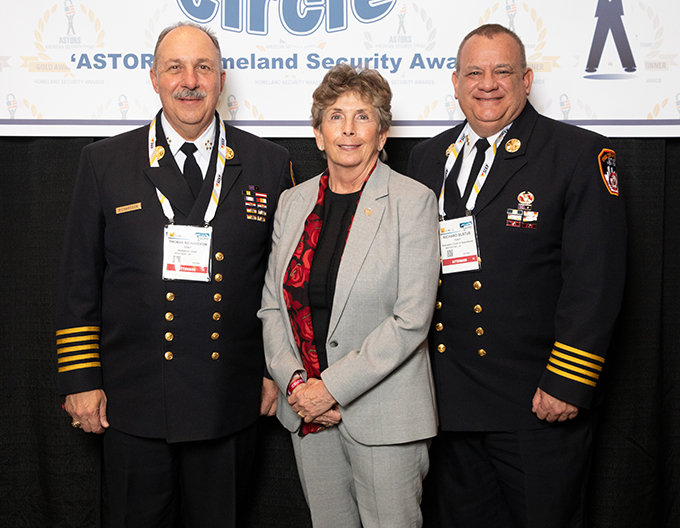
AST Honors Thomas Richardson, FDNY Chief of Department; Dr. Kathleen Kiernan, President of NEC National Security Systems; and Richard Blatus, FDNY Assistant Chief of Operations, at the 2021 ‘ASTORS’ Awards Luncheon at ISC East.
The United States was forever changed 20 years ago on September 11th, and we were fortunate to have many of those who responded to those horrific tragedies join us at the 2021 ‘ASTORS’ Awards Luncheon.
In the days that followed 9/11, the critical needs of protecting our country catapulted us into new and innovative ways to secure our homeland – which is how many of the agencies and enterprise organizations that are today ‘ASTORS’ Awards Champions, came into being.
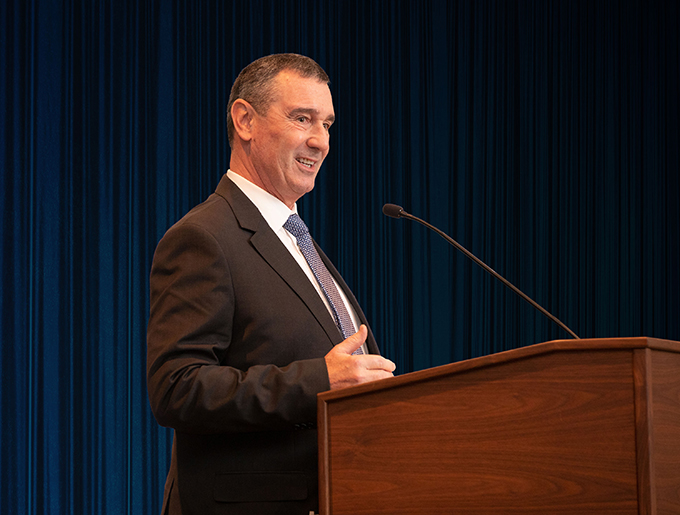
Our 2021 keynote speaker featured a moving and informative address from TSA Administrator and Vice-Admiral of the United States Coast Guard (Ret), David Pekoske; to our attendees who traveled from across the United States and abroad, on the strategic priorities of the 64,000 member TSA workforce in securing the transportation system, enabling safe, and in many cases, contactless travel.

Legendary Police Commissioner William Bratton of the New York Police Department, the Boston Police Department, and former Chief of the Los Angeles Police Department was also live at the event, meeting with attendees and signing copies of his latest work ‘The Profession: A Memoir of Community, Race, and the Arc of Policing in America,’ courtesy of the generosity of our 2021 ‘ASTORS’ Awards Premier Sponsors.
The 2022 ‘ASTORS’ Awards Program is Proudly Sponsored by New PLATINUM SPONSOR: NEC National Security Systems (NSS), New Premier Sponsors Rajant Corporation, and guardDog AI, and returning Sponsors to date, ATI Systems, Automatic Systems, RX Global, and SIMS Software!
The continually evolving ‘ASTORS’ Awards Program will emphasize the trail of Accomplished Women in Leadership in 2022, as well as the Significance and Positive Impact of Advancing Diversity and Inclusion in our Next Generation of Government and Industry Leaders. #MentorshipMatters
So be on the lookout for exciting upcoming announcements of Speakers, Presenters, Book Signing Opportunities, and Attendees at the 2022 ‘ASTORS’ Awards Presentation Luncheon in November of 2022 in New York City!
Nominations are currently being accepted for the 2022 ‘ASTORS’ Homeland Security Awards at https://americansecuritytoday.com/ast-awards/.
Comprehensive List of Categories Include:
| Access Control/ Identification | Personal/Protective Equipment | Law Enforcement Counter Terrorism |
| Perimeter Barrier/ Deterrent System | Interagency Interdiction Operation | Cloud Computing/Storage Solution |
| Facial/IRIS Recognition | Body Worn Video Product | Cyber Security |
| Video Surveillance/VMS | Mobile Technology | Anti-Malware |
| Audio Analytics | Disaster Preparedness | ID Management |
| Thermal/Infrared Camera | Mass Notification System | Fire & Safety |
| Metal/Weapon Detection | Rescue Operations | Critical Infrastructure |
| License Plate Recognition | Detection Products | COVID Innovations |
| Workforce Management | Government Security Programs | And Many Others to Choose From! |
Don’t see a Direct Hit for your Product, Agency or Organization?
Submit your category recommendation for consideration to Michael Madsen, AST Publisher at: mmadsen@americansecuritytoday.com.
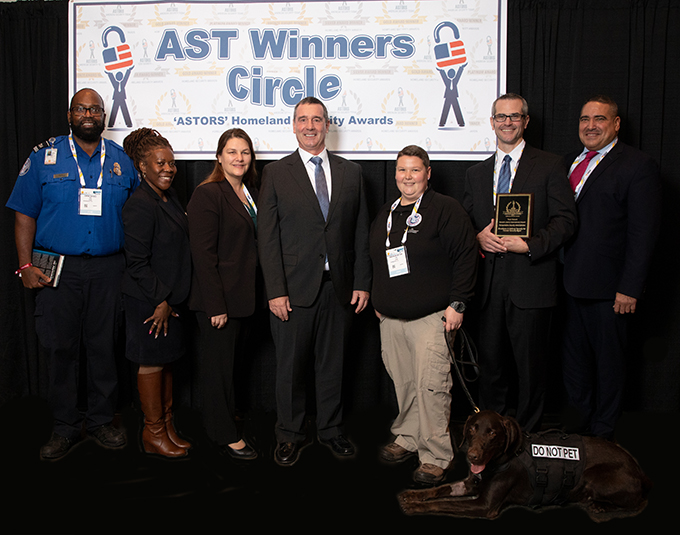
In 2021 over 200 distinguished guests representing Federal, State, and Local Governments, and Industry Leading Corporate Firms gathered from across North America, Europe, and the Middle East to be honored among their peers in their respective fields which included:
-
The Transportation Security Administration (TSA)
-
ICE Homeland Security Investigations (ICE HSI)
-
Customs & Border Protection (CBP)
-
The Federal Protective Service (FPS)
-
Argonne National Laboratory (ANL)
-
DHS Science & Technology (S&T)
-
The National Center for Disaster Medicine & Public Health (NCDMPH)
-
The American Red Cross
-
The InfraGard National Alliance
-
The Metropolitan Police (MPD)
-
The U.S. Fire Administration (USFA)
-
Naval Postgraduate School Center for Homeland Defense and Security (CHDS)
-
The Federal Air Marshals Service
-
The San Diego Harbor Police Foundation, and Many More!
Register for the 2022 ‘ASTORS’ Luncheon Today

American Security Today is delighted to announce, that Deputy Executive Assistant Commissioner (DEAC) Diane J. Sabatino of the Office of Field Operations, U.S. Customs and Border Protection (CBP), will be the opening keynote speaker at the much-anticipated 2022 ‘ASTORS’ Awards Presentation Luncheon, on Wednesday, November 16th, 2022.
American Security Today’s Annual ‘ASTORS’ Awards is the preeminent U.S. Homeland Security Awards Program, and now in its Seventh Year, continues to recognize industry leaders of Physical and Border Security, Cybersecurity, Emergency Preparedness – Management and Response, Law Enforcement, First Responders, as well as federal, state and municipal government agencies in the acknowledgment of their outstanding efforts to Keep our Nation Secure.
To take advantage of this exclusive luncheon opportunity to invite your team, guests, clients, and show visitors to a gourmet, affordable, plated meal event in the heart of New York City, for a fabulous networking opportunity!
Go to https://americansecuritytoday.com/product/awards-luncheon/ to secure your seat or reserve a table. ***Limited space available so Register Today. There will be no on-site registrations.

Your ‘ASTORS’ Awards Luncheon registration includes complimentary attendee access to ISC East where you can meet the world’s most innovative suppliers and cyber experts, immerse yourself in hands-on tech and learn from world-renowned speakers and thought-leaders.
Why American Security Today?
The traditional security marketplace has long been covered by a host of publications putting forward the old school basics to what is Today – a fast-changing security landscape.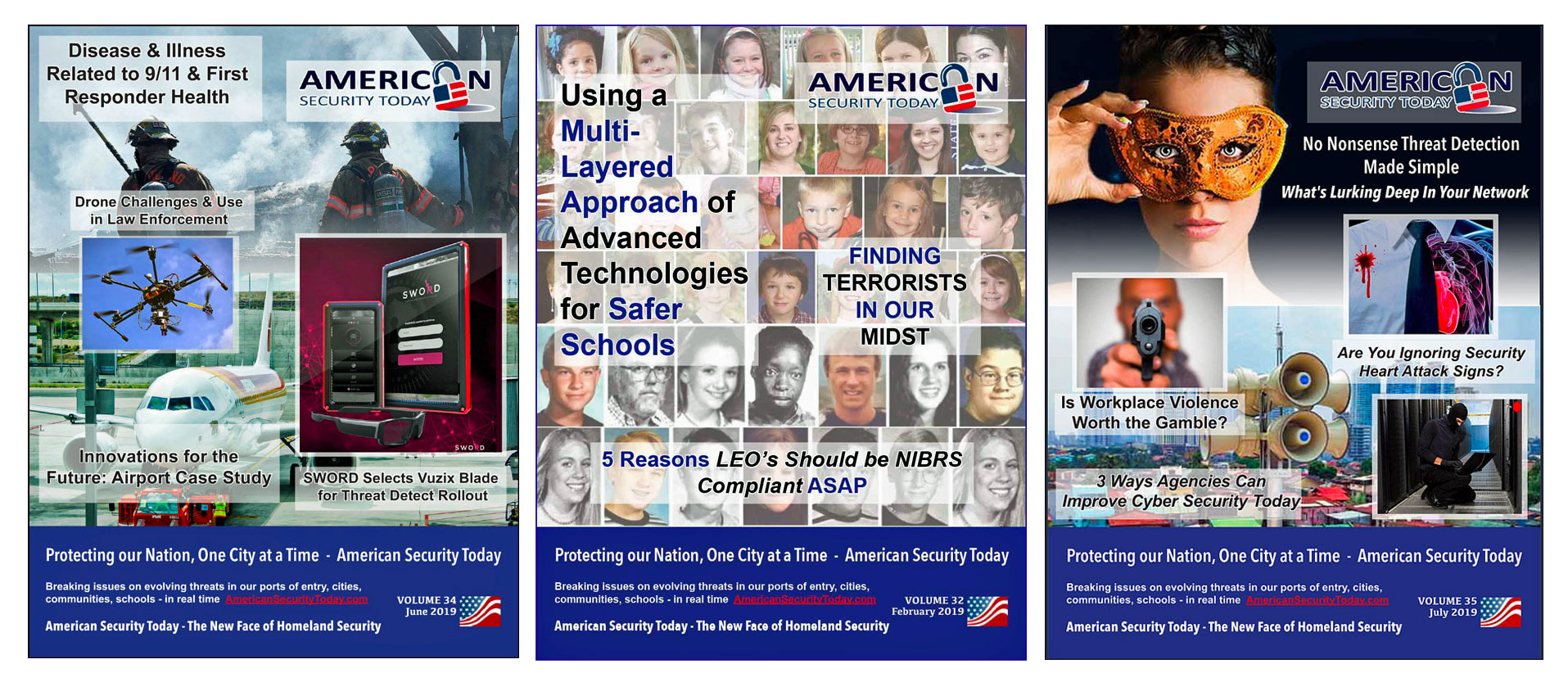
American Security Today is uniquely focused on the broader Homeland Security & Public Safety marketplace with over 75,000 readers at the Federal, State, and local levels of government as well as firms allied to the government.
American Security Today brings forward a fresh compelling look and read with our customized digital publications that hold readers’ eyes throughout the story with cutting-edge editorial that provides solutions to their challenges.
Harness the Power of the Web – with our 100% Mobile Friendly Publications

AST Digital Publications are distributed to over 75,000 qualified government and homeland security professionals, in federal, state, local, and private security sectors.
‘PROTECTING OUR NATION, ONE CITY AT A TIME’
AST Reaches both Private & Public Experts, essential to meeting these new challenges.
Today’s new generation of public safety and security experts need real-time knowledge to deal with domestic and international terrorism, lone wolf attacks, unprecedented urban violence, shifts in society, culture, and media bias – making it increasingly difficult for Homeland Security, Law Enforcement, First Responders, Military and Private Security Professionals to implement coordinated security measures to ensure national security and improve public safety.
These experts are from Government at the federal, state, and local level as well as from private firms allied to the government.
AST provides a full plate of topics in our AST Monthly Magazine Editions, AST Website, and AST Daily News Alerts, covering 23 Vital Sectors such as Access Control, Perimeter Protection, Video Surveillance/Analytics, Airport Security, Border Security, CBRNE Detection, Border Security, Ports, Cybersecurity, Networking Security, Encryption, Law Enforcement, First Responders, Campus Security, Security Services, Corporate Facilities, and Emergency Response among others.
AST has Expanded readership into integral Critical Infrastructure audiences such as Protection of Nuclear Facilities, Water Plants & Dams, Bridges & Tunnels, and other potential targets of terrorism.
Other areas of concern include Transportation Hubs, Public Assemblies, Government Facilities, Sporting & Concert Stadiums, our Nation’s Schools & Universities, and Commercial Business Destinations – all enticing targets due to the large number of persons and resources clustered together.
(See just a few highlights of American Security Today’s 2021 ‘ASTORS’ Awards Presentation Luncheon at ISC East. Courtesy of My Pristine Images and Vimeo.)
To learn more about ‘ASTORS’ Homeland Security Award Winners solutions, please see the 2021 ‘ASTORS’ CHAMPIONS Edition Fully Interactive Magazine – the Best Products of 2021 ‘A Year in Review’.
The Annual CHAMPIONS edition includes a review of Annual ‘ASTORS’ Award Winning products and programs, highlighting key details on many of the winning firm’s products and services, including video interviews and more.
It serves as your Go-To Source throughout the year for ‘The Best of 2021 Products and Services‘ endorsed by American Security Today, and can satisfy your agency’s and/or organization’s most pressing Homeland Security and Public Safety needs.
From Physical Security (Access Control, Critical Infrastructure, Perimeter Protection, and Video Surveillance Cameras and Video Management Systems), to IT Security (Cybersecurity, Encryption, Data Storage, Anti-Malware and Networking Security – Just to name a few), the 2021 ‘ASTORS’ CHAMPIONS EDITION has what you need to Detect, Delay, Respond to, and Mitigate today’s real-time threats in our constantly evolving security landscape.
It also includes featured guest editorial pieces from some of the security industry’s most respected leaders, and recognized firms in the 2021 ‘ASTORS’ Awards Program.
-
For a complete list of 2021 ‘ASTORS’ Award Winners, begin HERE.
For more information on All Things American Security Today, as well as the 2021 ‘ASTORS’ Awards Program, please contact Michael Madsen, AST Publisher at mmadsen@americansecuritytoday.com.
AST strives to meet a 3 STAR trustworthiness rating, based on the following criteria:
- Provides named sources
- Reported by more than one notable outlet
- Includes supporting video, direct statements, or photos















